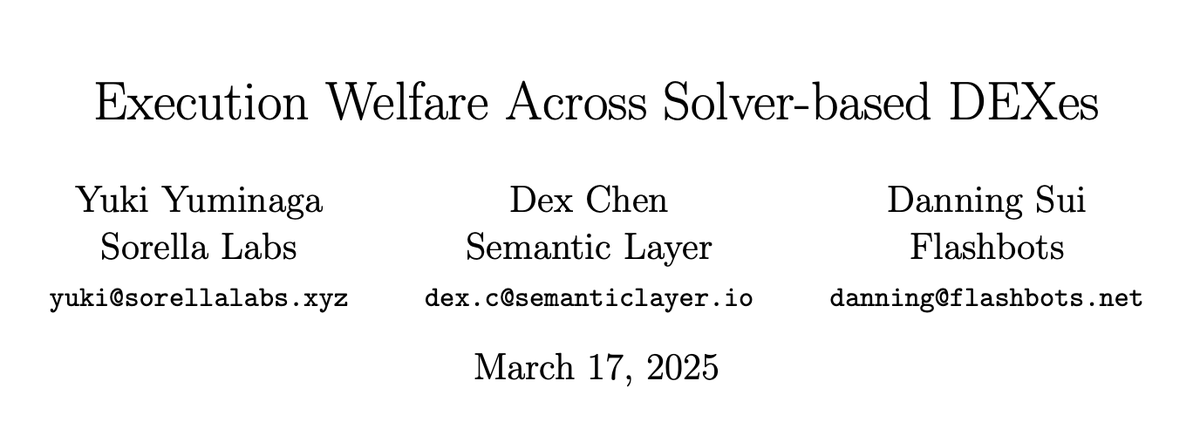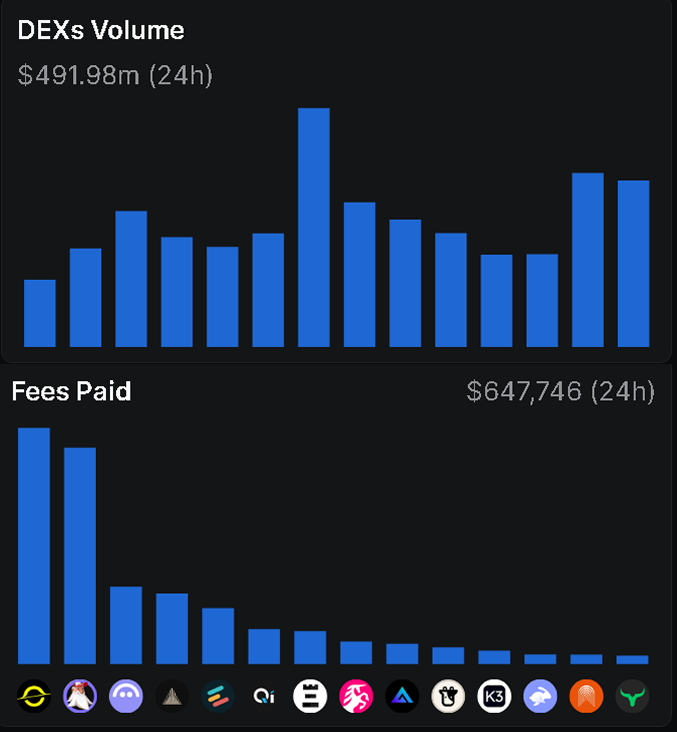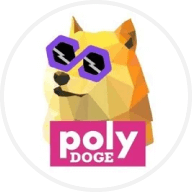1inch-hinta
valuutassa USD

Tietoja kryptosta 1inch

Vastuuvapauslauseke
OKX ei tarjoa sijoitus- tai omaisuussuosituksia. Sinun on harkittava huolellisesti, sopiiko digitaalisten varojen treidaus tai hallussapito sinulle taloudellisen tilanteesi huomioon ottaen. Ota yhteyttä laki-/vero-/sijoitusalan ammattilaiseen, jos sinulla on kysyttävää omaan tilanteeseesi liittyen. Lisätietoja on käyttöehdoissa ja riskivaroituksessa. Käyttämällä kolmannen osapuolen verkkosivustoa (”TPW”) hyväksyt, että kolmannen osapuolen verkkosivuston käyttöön sovelletaan kolmannen osapuolen verkkosivuston ehtoja. Ellei nimenomaisesti kirjallisesti toisin mainita, OKX ja sen kumppanit (”OKX”) eivät ole millään tavalla yhteydessä kolmannen osapuolen verkkosivuston omistajaan tai operaattoriin. Hyväksyt, että OKX ei ole vastuussa mistään menetyksistä, vahingoista tai muista seurauksista, jotka aiheutuvat kolmannen osapuolen verkkosivuston käytöstäsi. Huomaathan, että kolmannen osapuolen verkkosivun käyttö voi johtaa varojesi menetykseen tai vähenemiseen. Tuote ei välttämättä ole saatavilla kaikilla lainkäyttöalueilla.
Krypton 1inch hintasuoritus
1inch sosiaalisessa mediassa
Oppaat

Luo ilmainen OKX:n tili.
Lisää varoja tilillesi.
Valitse kryptosi.
1inch UKK
Tutustu tarkemmin 1inch-rahakkeeseen
Kryptovaluutatin kasvu avasi väyliä sekä <href="/learn/what-is-centralized-exchange">centralized että hajautetun pörssin. Jälkimmäinen hälventää auktoriteettihahmon tarpeen. hajautettupörssi (DEX) edellyttävät vain käyttäjän yhdistämistä lohkoketjuun aloittaakseen treidauksen. 1inch (1INCH) on yksi tällainen pörssi.
Mikä on 1inch
1inch on hajautettu pörssi, jonka tavoitteena on tarjota käyttäjälle paras hinta kryptovaluuttakauppaan useissa lohkoketjuissa. Yhdistämällä likviditeettiä eri lähteistä DEX jaa kauppaa tehokkaasti eri pörssien välillä varmistaakseen käyttäjälle edullisimman hinnan. Tätä varten 1inch skannaa erilaisia DEX:iä löytääkseen parhaan käytettävissä olevan hinnan ja reitittää saumattomasti käyttäjän kaupat maksimoidakseen heidän treidaus-tuloksensa.
1inch tiimi
1inchin perustivat Sergej Kunz ja Anton Bukov. 1inchin tiimiin kuuluu muun muassa teknologian, lohkoketjun, markkinoinnin ja myynnin asiantuntijoita, jotka osallistuvat alustan kehittämiseen ja toimintaan.
1inch on saanut tukea myös merkittäviltä sijoittaja- ja pääomasijoitusyhtiöiltä, kuten Binance Labsilta, Pantera Capitalilta ja muilta merkittäviltä pääomasijoittajilta.
Kuinka 1inch toimii
1inch toimii hajautettuna pörssi koostajana, joka seuraa jatkuvasti muita DEX:iä löytääkseen käyttäjille kilpailukykyisimmät kryptovaluuttakurssit. Älysopimusta hyödyntämällä 1inch ohjaa asiakkaan kaupan tehokkaasti tunnistettuihin parhaan hinnan tarjoaviin DEX:iin. Tämä eri pörssien hakutapa auttaa syventämään likviditeettiä ja tarjoaa käyttäjälle pääsyn markkinoiden edullisimpaan hintaan.
Likviditeetin syventämiseksi entisestään 1inch tarjous käyttäjä tarjoaa mahdollisuuden osallistua likviditeetin louhinta. Tuottona likviditeetin tarjoamisesta alustalle käyttäjä voi ansaita palkkiot lisärahakkeena.
1inchin natiivirahake: 1INCH
1inchin natiivirahake, 1INCH, käyttää likviditeetti koostajaa, likviditeettiprotokollaa ja DAO:ta. Sen lisäksi, että 1INCH on ERC-20-rahake, se toimii hallintorahake. 1INCH rahake haltijat saavat äänioikeuden ja voivat osallistua aktiivisesti pöytäkirjan futuurien muotoiluun. Tätä varten he voivat äänestää tain puolesta protokollan ehdotettuja muutoksia ja uusia parametreja vastaan.
1INCH tokenomiikka
Kokonaistarjonta on 1,5 miljardia 1INCH rahake ja kierrossa oleva tarjonta yli 413 miljoonaa rahakea. Äänioikeuden lisäksi 1INCH-haltija voi ansaita palkkioita omistus the rahaken airdropin muodossa.
Kuinka steikkaa 1INCH
1INCH haltija voi ansaita palkkiot, kun hän sitoutuu prosenttiosuuteen omistuksestaan protokollaan. steikkaus 1inch-protokollalla on suoraviivainen. Käynnistä ensin 1 tuuman DApp. Vie hiiri "DAO"-välilehden päälle ja napsauta avattavasta valikosta "steikkaus". Anna sitten summa 1INCH sinä haluaisi steikkaa, aseta lukitusjakso ja napsauta Anna lupa steikkaa. Viimeistele prosessi allekirjoittamalla transaktio sinun connected lompakko viimeistelläksesi prosessin. Kun olet valmis, sinä vastaanottaa Unicorn Power, jonka sinä voi delegoida ratkaisijoita aloittamaan vastaanota palkkiot.
1INCH käyttötapaukset
1INCH is suurempi kuin a utility rahake; Sillä on keskeinen rooli pöytäkirjan hallinnossa, sillä Rahake Haltija voi äänestää yhteisön välittämistä ehdotuksista. Lisäksi 1INCH tehostaa likviditeetin louhintaprosessia steikkauksen kautta. Steikkaus their 1INCH rahake, käyttäjä voi osallistua protokollan likviditeettiin ja ansaita palkkiot in tuotto.
1INCH
1INCH jaetaan seuraavasti:
- 30 prosenttia on varattu yhteisön kannustimiin.
- 22.5 prosenttia on osoitettu ydinavustajille.
- 18,5 prosenttia kohdennetaan ensimmäiselle tukijaryhmälle.
- 14,5 prosenttia on varattu Verkon kasvuvarat.
- 12,2 prosenttia kohdennetaan toiselle tukijaryhmälle.
- 2,3 prosenttia kohdennetaan pienimuotoisille tukijoille.
Mitä futuurit pitää 1inch
Johtavana DEX-koostajana mainostettu 1inch tarjoaa likviditeettipoolin, rahake-viljelyominaisuudet ja aidosti hajautetun hallintomallin. Nämä ominaisuudet erottavat DEX-koostajan muista. Omistautuneen tiimin ansiosta, joka keskittyy edistyneiden ohjelmistojen ja työkalujen integrointiin optimaalisen hinnan varmistamiseksi, 1inch on valmis säilyttämään merkityksensä johtavana DEX-koostajana.
ESG-tiedonanto





































